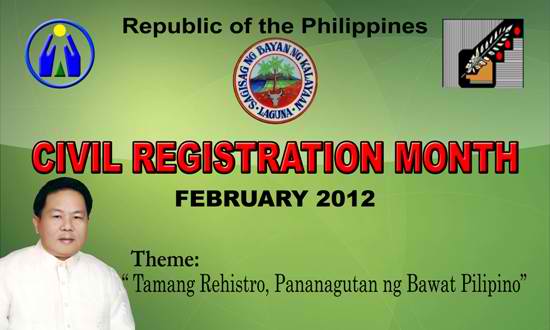


Kalayaan History and Discription
Historical Background
A marker posted in the municipal building of Kalayaan reads:
Today, the belief had been realized. But digging through historical records, it seems that the place is still made up of the three original visitas of Babaye (now Longos), Abacao (now San Juan) and San Pablo (now San Antonio).
Babaye got its name when the Spaniards came and found women washing clothes in the brook. When the Spaniards continued their aim to conquer the land and a little north of Babaye, they saw a place where people dried abaca and named the place Abacao. The Spaniards claimed the mountains east of Babaye and named the village found there in honor of San Pablo.
In 1577, Franciscan priest arrived. Some settled in Laguna. The two priests assigned in Laguna were Father P. San Juan de Placencia and Father Diego Oropesa. They started their mission to Christianize the Filipinos in this part of the country. The three visitas were initially ruled by the Spaniards from Lumban under the leadership of Don Juan Tinawin, a Paeteño. In 1590, the leadership was given to Don Pable Caodpod who hailed from Babaye, Then in 1600, by the order of Rev. Father Juan de Cliver, the three visitas were incorporated with Paete. They became a good Balangay Paete. The three visitas were ruled by native leaders, Don Agustin Gatan as Presidente and Don Antonio Hubid as the Vice-Presidente.
In 1669, after the long ardous work of don Pedro Banay-banay with the help of Father Juan Bautista the town of Longos composed of Babaye, Abacao and half of San Pablo was established, The other half of San Pablo remained under the political jurisdiction of Paete. The first Parish Priest was Rev. Fr. Lucas Sarro.
Came 1755, the residents of San Pablo presented a resolution to the Governor General advocating its separation from Paete and Longos, and the establishment of their own town which was renamed San Antonio.
After three long years of negotiation, San Antonio became a town separate from Longos and Paete on September 9, 1757. Peace therein was, however, disrupted when Moros raided the town in 1760. They killed the inhabitants and burned down the town. The in straight were taken as prisoners and slaves. It took a long number of years before some straight thinking citizens were able to re-establish peace and order in the town.
When the Americans came, Don Epifanio Montes was installed as Military President of Longos while Faustino Lafrades was given the same position for San Antonio. Under the administration, Public Law No. 959 was enforced for economic reasons. The 30 towns of Laguna were narrowed down to 19 on October 12, 1903. Longos, San Antonio and Pakil again became part of the municipality of Paete. However, on March 23, 1908, Don Pedro Sabio, then President of Paete, successfully worked for the separation of Longos from Paete. San Antonio was reverted back to its former status as a barrio of Longos.
In the year 1934, chaos was in the air. In San Antonio, the Anak Pawis Movement, a communist group headed by Teodoro Asedillo, a former teacher and police officer, was organized. Asedillo became a fugitive from justice for killing three municipal officials. Military operations were instituted for his capture. Residents feared for their lives and the town was in total confusion until 31 December 1935, when Asedillo was killed in Sitio Kaldon, Sampaloc, Quezon by Lt. Jesus Vargas. Peace was eventually restored thereafter.
In 1936, under the leadership of Mayor Gregorio Ademe, construction of Longos and San Antonio road was began.
During World War II, many sons of Longos joined the underground movement called Hukbalahap organized by Pedro Villegas in San Antonio. On the other hand, Dr. Tomas Kabamalan organized the Fil-American Comrade under Col. Hughed Strangun in Barangay San Juan. On July 4, 1946, the municipality joined the nation in the celebration of Philippine Independence from the United States of America.
On March 30, 1946, Executive Order No. 127 which ordered the transfer of the seat of government from Longos to San Juan was signed by Pres. Manuel Roxas. From then on, a part of San Juan became the Poblacion, while Longos, San Antonio and the rest of San Juan became its barangays.
The name of the Municipality was changed to “KALAYAAN†on May 17, 1956 by virtue of House Bill No. 5498 RA No. 1477 authored by Congressman Wenceslao Rancap Lagumbay.
 Download
Download
To read more about Kalayaan, Laguna, Please download the .Docx Files









